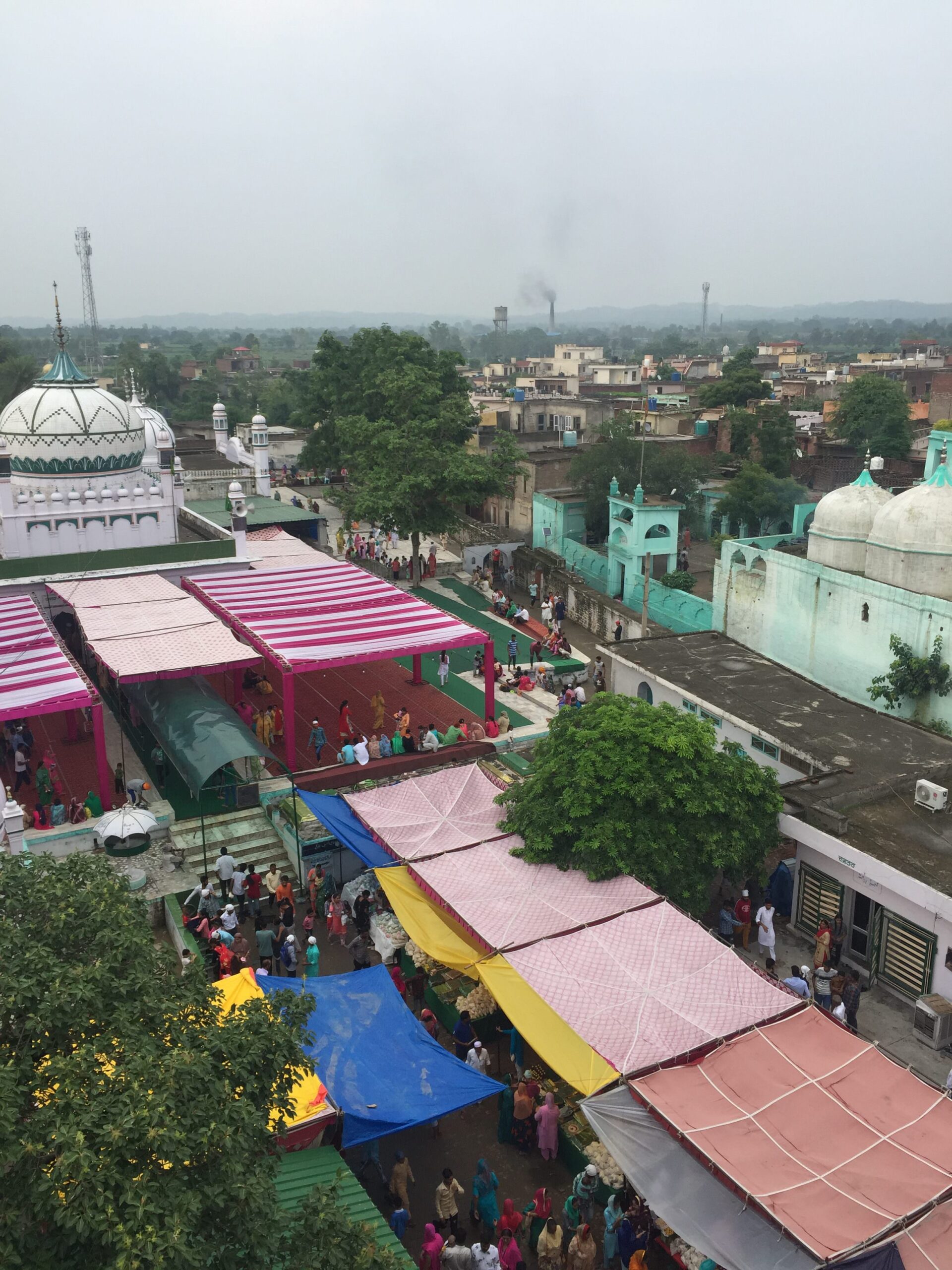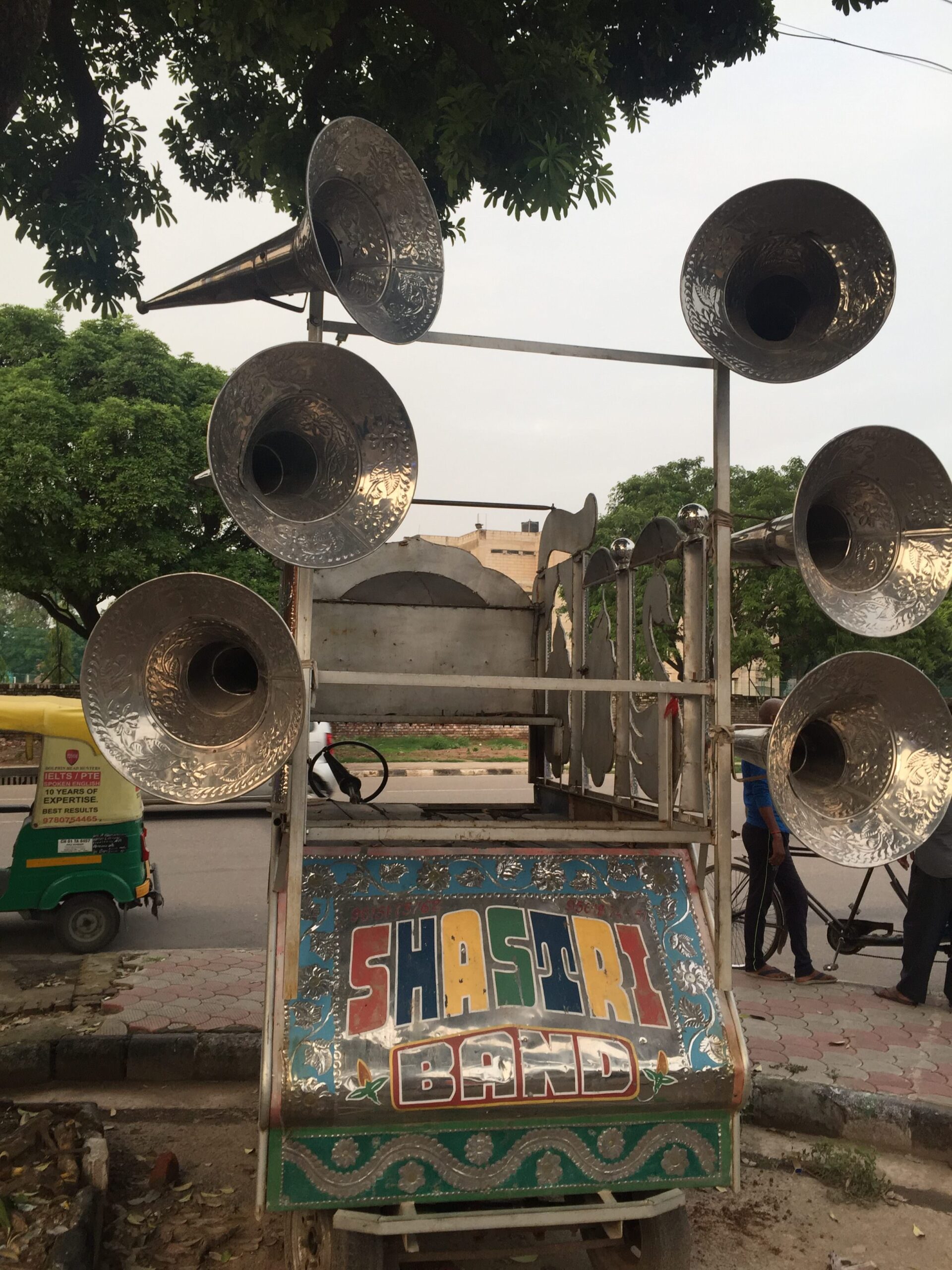

By Davindar Singh, PhD Candidate in Ethnomusicology, Harvard University
My research in the Punjab was conducted across major urban centers, towns, villages, and a little bit in the countryside proper, but much of it ended up centered on the roads that connect all of the above.
My main goal was to examine the production of religious sound in a variety of settings, with an eye toward the social demarcation of “spaces” around the sites of these sounds. Of course, this originally led me to the kinds of places that one would obviously expect: shrines, churches, gurdwaras, masjids, a few Buddhist monasteries, and so on. After listening to most of the field recordings I made, they all seemed to end up pointing to the sort of conclusions that are common in the literature on sound studies in urban spaces: people go about their business within their particular location-bound social milieu, but sound bleeds over. This tends to lead to different reactions that indicate ongoing social attitudes, without necessarily changing the way people go about their business or their particular location-bound social milieu — sound isn’t always that powerful of a social force.
I certainly heard many things that supported this habitual description — Gurbani at Harmandir Sahib (Amritsar’s famed Golden Temple) suffuses the surrounding blocks in a reverberant manner, shaped by the warren-like alleyways that surround the compound. This harkens back to pre-colonial construction and planning practices that still shape much of the city. In turn, recent construction in the city has produced open commercial plazas and long roads, which ease tourist foot traffic and the quotidian logistical transport that fuels daily life, but produce very different patterns of aural resonance (if any) compared to the older alleys flanking the Golden Temple. The highway flanking Lahore’s Jamia Masjid offers relevant points of comparison.
The significance of transportation and logistics to the urban aural environment led me to try to figure it out in rural areas. Sufi martyrs’ shrines (dargahs) in comparative seclusion are only reachable on foot, often sequestered in impoverished peri-urban communities. In turn, dargahs within wealthier communities — landholding being one of the key historical financial drivers in Punjab — have large (and profitable) festivals, with dramatic all-night recitation, and the roads that come to them grow more firmly demarcated with hastily constructed shops.
Similarly shaped by logistical factors, the shrines and recitations dedicated to Gugga Marhi, a saint who protects against snake bites and whose adherents are ecumenically hailed in texts also associated with Islamic, Hindu, and Sikh discourse (and whose shrines sport Urdu, Hindi, and Punjabi scripture) are invariably positioned at roadsides, using sound to lure in adherents. Yet the faith’s lack of political representation and smaller, less powerful congregations may be indexed in its temples’ significantly quieter — though constant — aural production, and its lack of aesthetically dramatic presence in the urban environment.
However dramatic their shrines’ interiors may be, I only saw one (in Chandigarh) with any sort of eye-catching exterior construction or ear-catching sonority, and even then, its location along a long, non-pedestrian thoroughfare offered a measure of isolation. Many of the Buddhist monasteries are based at deliberate pedestrian isolation as well, even near and within the urban centers of Dharamsala and Shimla, which compels adherents to tread a long — though religiously marked — distance before actually reaching any forms of religious architecture or sonic production.
Overall, this was a very productive start to my research, and has given me plenty of material to begin working with. Next, I will assess social and cultural causality through an ethnographic exploration of the sites I examined.
Singh’s research and trip were supported by a grant from the Lakshmi Mittal and Family South Asia Institute. All images provided by Davindar Singh.
